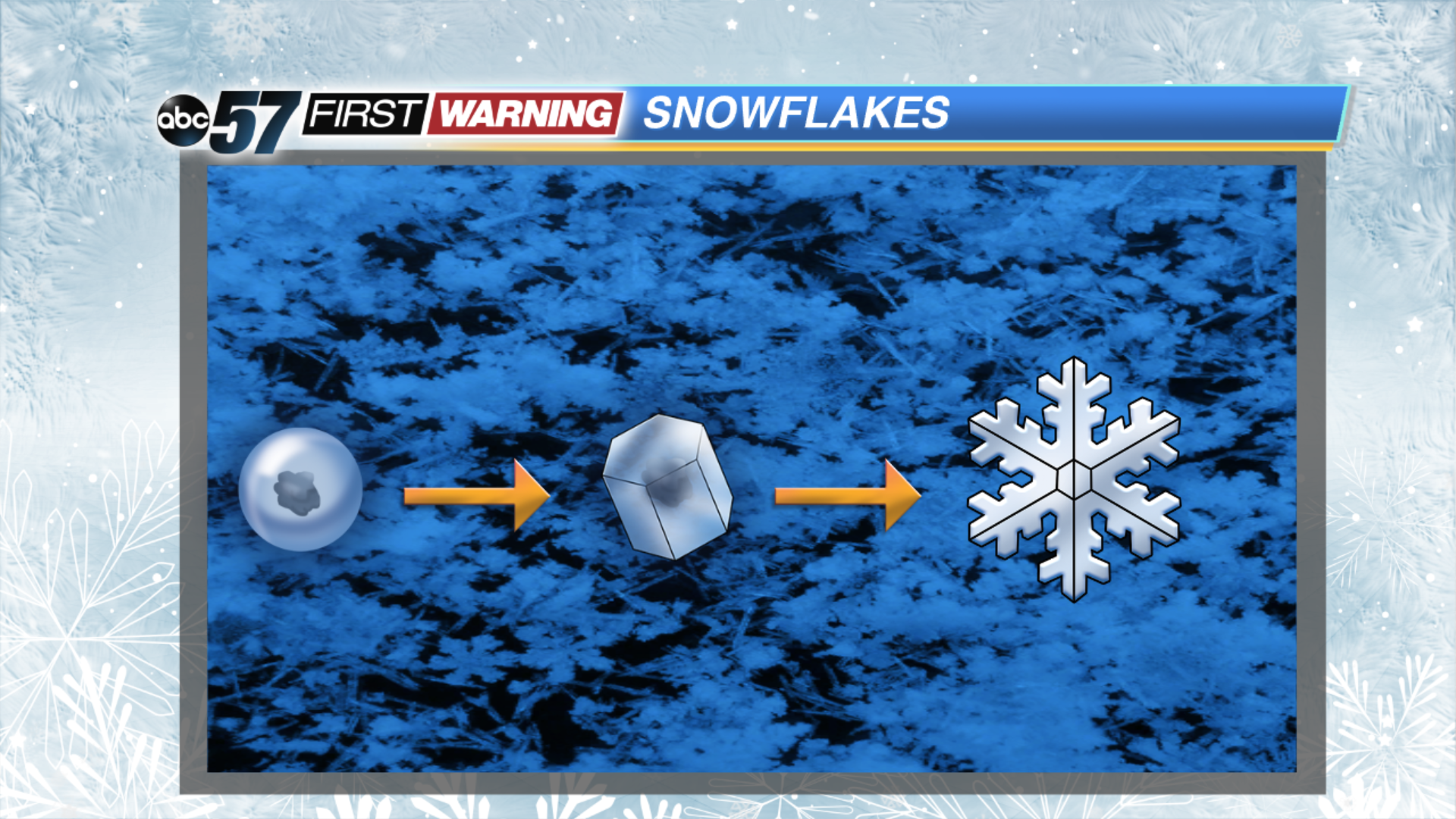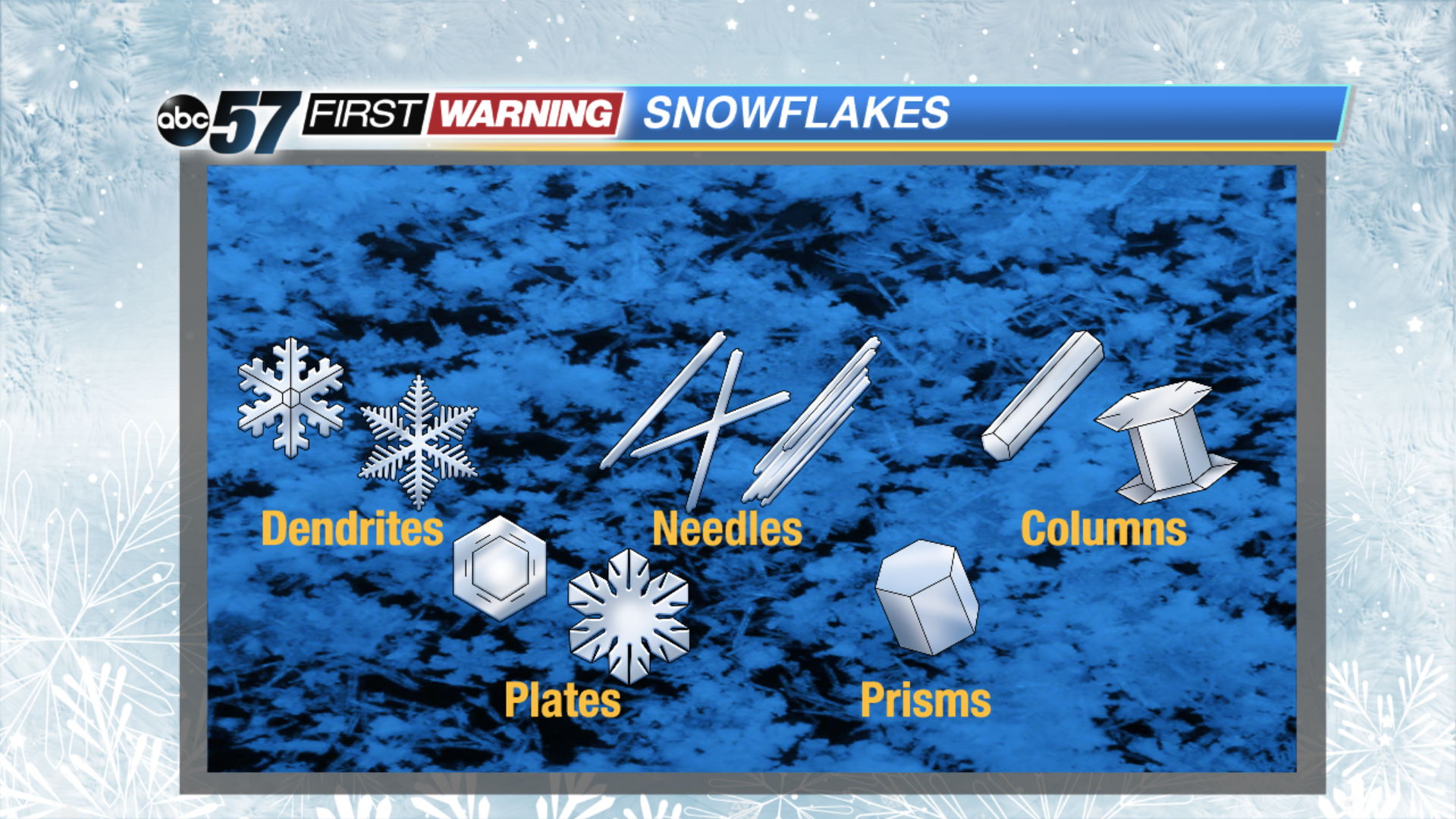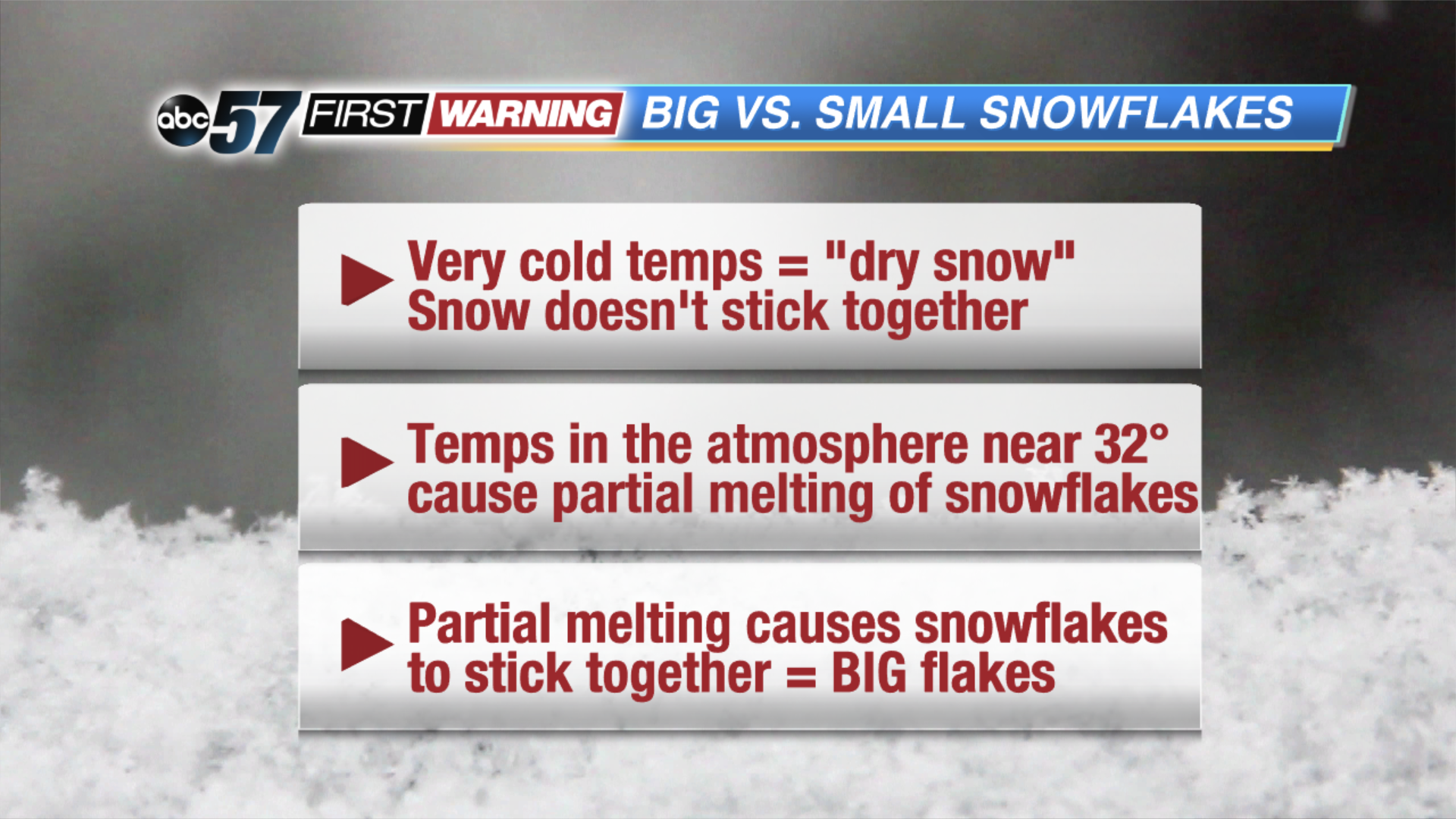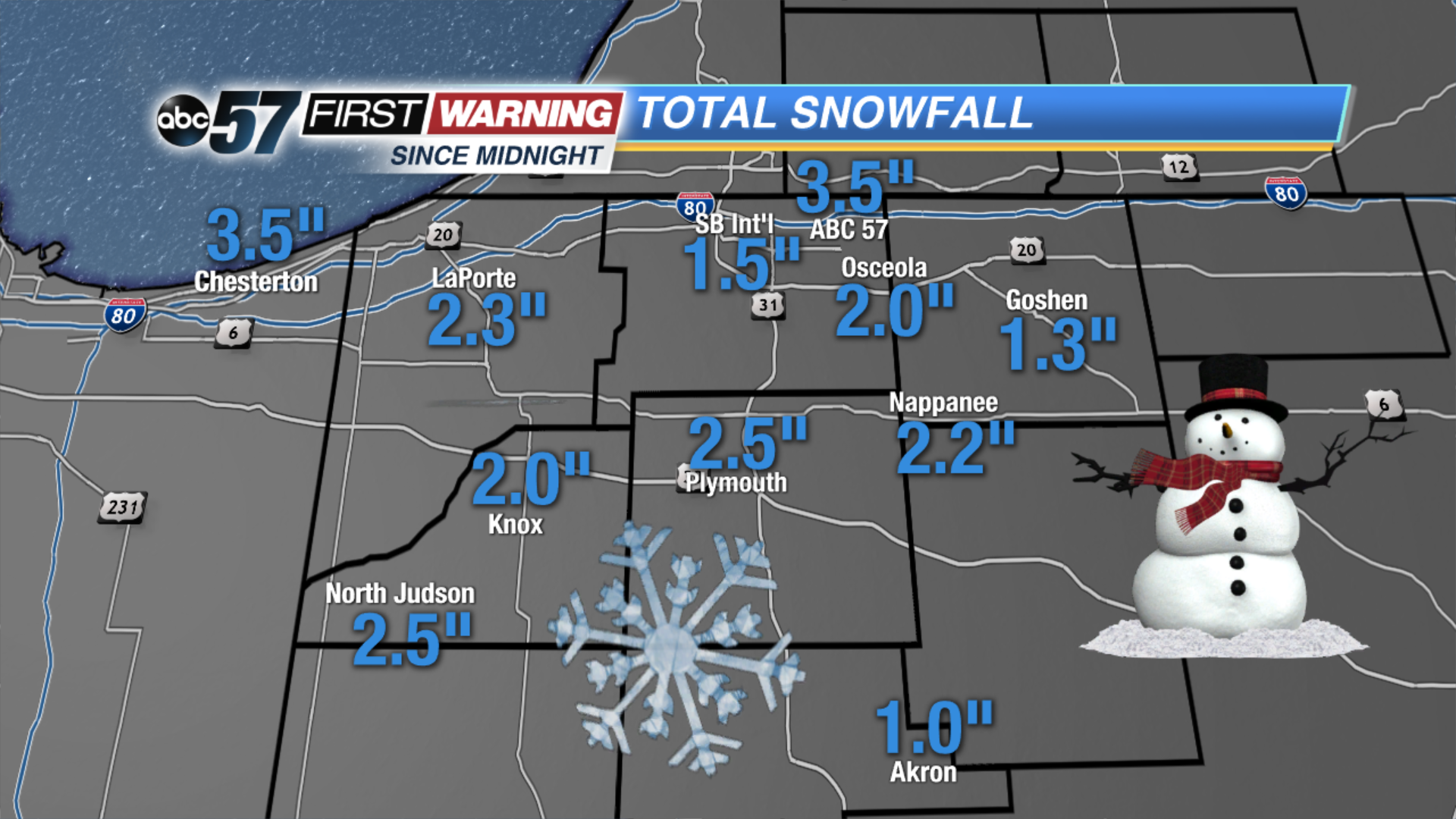Why were Thursday's snowflakes gigantic?
Posted: Nov 15, 2018 1:24 PM EST
If you were out and about, or even if you looked outside, Thursday morning you probably noticed some very large snowflakes falling. The kind of snowflakes that make for beautiful pictures and videos. Believe it or not, there is a reason for us seeing these gigantic snowflakes. First, let's look at how snowflakes form. All snowflakes start as tiny supercooled water droplets way up in the atmosphere. Those water droplets freeze to dust or pollen particles, and grow into a six-sided ice crystal. The ice crystals then turn into snowflakes of many different shapes as they fall through different layers of the atmosphere.
The shape of the snowflakes we ultimately see hitting the ground depends on the temperature of the atmosphere at varying levels. There are five basic groups we can use to classify snowflakes:
- Dendrites
- Plates
- Needles
- Prisms
- Columns
Dendrites are the ones we are most familiar with, as they have the "classic" snowflake shape we often draw. However, if it is cold enough, snowflakes shaped like needles, prisms and columns can fall to the ground!
So, which kind of snowflake was falling Thursday morning? In all likelihood, most of today's snowflakes were dendrites and plates, the two largest types of snowflakes. Not only are these types of snowflakes larger to begin with, but temperatures in the atmosphere were around to just below freezing here in Michiana. That resulted in many snowflakes melting partially on their way down. After a snowflake partially melts, a thin film of liquid water forms around it. This film acts as "glue" and allows other snowflakes to essentially stick to it. As snowflakes continue sticking together, they grow and grow into large snowflakes. If conditions are right, snowflakes can grow to the size of quarters, half dollars or even golf balls! This type of snow is referred to as a heavy wet snow. And it's exactly what Michiana was seeing Thursday morning. Temperatures in the atmosphere were right around 32°, allowing for our snowflakes to stick together efficiently and grow quite large! When temperatures at the surface and in the atmosphere are colder (below 25°), snowflakes don't melt, causing them to stay smaller. This type of snow is referred to as a dry snow, and typically features a lot of tiny, grainy snowflakes. So, when you hear our meteorologists say a heavy wet snow is on the way, you know to expect big flakes that make for ideal conditions to make snowballs and snowmen!




